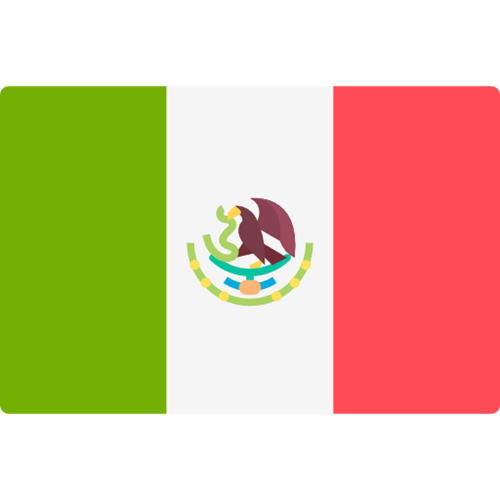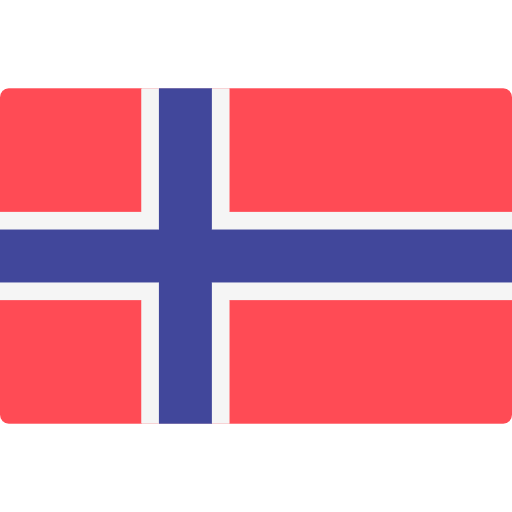Consumer Products | Monthly bulletin | March 2024

Chemical | Cosmetics & Personal Care | Softlines & Leather |
Toys, Childcare & Hardlines | Personal Protective Equipment
Europe
New hygiene standards for drinking water
On the 23rd January 2024, the European Commission adopted six new minimum hygiene standards for materials and products that come into contact with drinking water.
The objective is to prevent microbial growth and reduce the risk of harmful substances leaching into drinking water.
They will apply from the 31st December 2026, to materials and products used in contact with drinking water.
The six acts are expected to be published in the Official Journal after two months in which the European Parliament and the Council will be able to formulate their objections.
Work is also being done on other methodologies and guidelines required by the Drinking Water Directive, such as measuring microplastics and perfluoroalkyl substances (PFAS) in drinking water.
For more information, consult the delegated act in the European Commission here.
Exemption for cadmium and lead in plastic profiles
On the 10th January 2024, the European Commission published Commission Delegated Directive (EU) 2024/232 which amends Directive 2011/65/EU of the European Parliament and of the Council as regards an exemption for cadmium and lead in plastic profiles in electrical and electronic windows and doors containing recovered rigid polyvinyl chloride.
The entry 46 is added in Annex III to Directive 2011/65/EU (RoHS Directive).
Member States shall adopt and publish, by the 31st July 2024 at the latest, the laws, regulations and administrative provisions necessary to comply with this Directive.
They shall apply those provisions from the 1st August 2024.
Mercury deal to completely phase out in the EU
On the 21st February 2021, the Council and European Parliament reached a provisional political agreement on the Proposal for a Regulation of the European Parliament and of the Council amending Regulation (EU) 2017/852 of the European Parliament and of the Council of 17 May 2017 on mercury as regards dental amalgam and other mercury-added products subject to manufacturing, import and export restrictions. The proposal addresses the residual remaining uses of mercury in products in the EU, with a view to establishing a mercury-free Europe. The deal is provisional pending formal adoption by both institutions.
For more information, consult the European Council website here.
On the 1st March 2024, the text of the Council and Parliament’s provisional agreement was included. For more information, please visit the Council of the European Union website here.
Recent publications on REACH Regulation
The following table provides a non-exhaustive summary of some recent updates regarding REACH Regulation (EC) No 1907/2006:
| Summary of the most recent updates | ||
|
Date |
Subject |
Link |
|
30/01/2024 |
ECHA CHEM is a new chemicals database. It contains information from over 100.000 REACH registrations that companies have submitted to ECHA. Later this year, the database will be expanded with the redesigned Classification and Labelling Inventory, followed by the first set of regulatory lists. |
For more information, consult the ECHA’s website here. |
|
30/01/2024 |
The European Chemicals Agency (ECHA) published its Strategy Statement 2024-2028. The strategy details the agency’s goals and priorities over the next five years to protect health and the environment through its work for chemical safety. |
For more information, consult the ECHA’s website here. |
|
07/02/2024 |
The European Chemicals Agency (ECHA) is considering recommending the following substances for the REACH Authorisation List:
|
For more information, consult the ECHA’s website here. |
|
07/02/2024 |
Publication of Consultation on a draft recommendation for amendment of Authorisation List entries of Dibutyl phthalate |
For more information, consult the ECHA’s website here. |
Other interesting links about REACH from the ECHA’s website
- Registry of restriction intentions until outcome - ECHA (europa.eu)
- Registry of SVHC intentions until outcome - ECHA (europa.eu)
- Substance evaluation - CoRAP - ECHA (europa.eu)
- Adopted opinions and previous consultations on applications for authorisation - ECHA (europa.eu)
- Applications for authorisation - current consultations - ECHA (europa.eu)
- Current calls for comments and evidence - ECHA (europa.eu)
- Authorisation List - ECHA (europa.eu)
- ECHA's completed activities on restriction
- Submitted restrictions under consideration
- Assessment of regulatory needs list
Interesting links about CLP on the ECHA’s website
- Registry of CLH intentions until outcome - ECHA (europa.eu)
- Harmonised classification and labelling consultations - ECHA (europa.eu)
RoHS
In February 2024, several countries published national updates related to the modifications made by the European Commission to Annex III and IV of Directive 2011/65/EU relating to limiting the use of certain dangerous substances in electrical and electronic equipment. They have been amended and supplemented as necessary by delegated acts. The publications are:
| Country | Date | Publication |
|
France |
18/02/2024 |
Order of February 16, 2024 amending the order of March 5, 2020 relating to the limitation of the use of certain dangerous substances in electrical and electronic equipment. (Text n° 12). From the 1st August 2024, Commission Delegated Directive 2024/232/EU amending Directive 2011/65/EU as regards an exemption relating to cadmium and lead in profiles in plastic material containing recycled rigid polyvinyl chloride intended for the manufacture of electric and electronic doors and windows. |
|
Spain |
21/02/2024 |
Order PJC/133/2024, of February 20, which modifies, with regard to exemptions relating to the use of lead and mercury, Annex IV of Royal Decree 219/2013, of March 22, on restrictions to the use of certain dangerous substances in electrical and electronic equipment. Through this order, the following delegated directives are incorporated into Spanish law:
|
Mexico
Hazardous substances and materials (dangerous goods)
On the 17th February 2024, the Official Mexican standard NOM-002-SCT-SEMAR-ARTF-2023 on the list of hazardous substances and materials (dangerous goods), took effect and NOM-002-SCT2/2011 was cancelled.
It applies the mandatory way to shippers, transporters and recipients of dangerous goods transported by general means of land, air, and sea communication. The aim is to identify the dangerous goods transported, according to their class, danger division, secondary danger, number assigned by the United Nations Organization, the special provisions to which their transport must be subject, quantitative limits of limited quantities and permitted excepted quantities and corresponding instructions for the use of packaging, large packaging, intermediate bulk containers, large containers and packaging, portable tanks, multi-element gas containers and bulk containers and their special provisions.
Sustainability, circular economy and environment
Miscellaneous technical publications relating to environmental, plastics, packaging and waste
The table below summarises the most recent publications regarding the environment, circular economy, and sustainability (non-exhaustive):
| Entity | Date | Publication |
|
French Ministry of Ecological Transition |
12/01/2024 |
Order of December 13, 2023 listing the products concerned by the opening of an accreditation program for the certification of the European Union ecological label and repealing the order of March 23, 2022. This order aims to complete the list of products subject to the opening of an accreditation program for certification of the European Union ecological label. The list is as follow:
|
|
European parliament |
17/01/2024 |
Parliament has approved a directive that will improve product labelling and ban the use of misleading environmental claims. Its main points are:
The next steps is the approval from the European Council and after that it will be published in the Official Journal. Member states will have 24 months to transpose it into national law. For more information, Consult the European Parliament website here. |
|
European Commission |
19/01/2024 |
Commission Implementing Regulation (EU) 2024/288 of 18 January 2024 concerning the frequency of checks on wood packaging material carrying, protecting or supporting certain commodities from certain third countries. |
|
European Commission |
25/01/2024 |
European initiative: Watch list of surface-water pollutants The Commission will revise the watch list of surface water pollutants. This list aims to ensure that the levels of several potential chemical pollutants are monitored in surface waters across the Union, so that the risk they may pose is properly assessed and, if necessary, controlled through the appropriate means. Its status is in preparation. |
|
European Commission |
25/01/2024 |
European initiative: Export and import of hazardous chemicals – review of the list of chemicals subject to international trade rules The Commission intends to update the list of hazardous chemicals subject to certain rules when internationally traded. Its status is in preparation. |
|
Scottish Minister |
09/02/2024 |
The Packaging Waste (Data Reporting) (Scotland) Amendment Regulations 2024 (S.I. 2024 No. 42) These Regulations amend the Packaging Waste (Data Reporting) (Scotland) Regulations 2023 (S.S.I. 2023/7) (the “principal Regulations”) to revise the definitions of “household packaging” and “exempt packaging”, and to clarify the division of responsibilities between brand owners, packer/fillers, importers and first UK owners, and distributors. These Regulations also amend the principal Regulations to require SEPA to publish a list of large producers and produce guidance in relation to the definition of “household packaging”, to require scheme operators to monitor the accuracy of the information provided by producers to a scheme and make other amendments. They come into force on the 1st April 2024. |
|
European Commission |
14/02/2024 |
Council and Parliament strike provisional deal on the right to repair directive (R2R). The agreed legislation will make it easier for consumers to seek repair instead of replacement by making the access to repair services easier, faster, transparent, and more attractive. The scope of the directive to those products for which the EU legislation lays down reparability requirements (i.e., washing machines, dishwashers, refrigerators, or vacuum cleaners). In the future, the Commission can introduce reparability requirements for new products, through the eco-design regulation, which will then be added to the list of products covered by the R2R directive (Annex 2). It includes as main points:
The provisional agreement needs to be endorsed and formally adopted by both institutions. |
|
European Commission |
15/02/2024 |
European initiative: National Emission Reduction Commitments Directive – evaluation EU legislation on the reduction of national emissions of certain atmospheric pollutants sets commitments that each EU Member State must meet for five air pollutants that significantly harm human health and the environment. Its status is call for evidences. |
|
European Commission |
20/02/2024 |
Regulation (EU) 2024/590 of the European Parliament and of the Council of 7 February 2024 on substances that deplete the ozone layer, and repealing Regulation (EC) No 1005/2009. |
|
European Commission |
20/02/2024 |
Regulation (EU) 2024/573 of the European Parliament and of the Council of 7 February 2024 on fluorinated greenhouse gases, amending Directive (EU) 2019/1937 and repealing Regulation (EU) No 517/2014. |
|
European Council |
20/02/2024 |
A provisional political agreement on a proposal to set EU air quality standards with the aim of zero-pollution by 2050. On the other hand, it seeks to bring EU air quality standards in line with the World Health Organization (WHO) recommendations. |
|
European commission |
20/02/2024 |
European Commission updated its website related to The European Green deal. It added the agreements, strategy and recommendation which were published in February 2024. For more information, consult the European Commission website here. |
|
European Council |
20/02/2024 |
Final approval for the directive to empower consumers for the green transition The Council adopted a directive to empower consumers for the green transition. The new rules will enhance consumers’ rights by amending the unfair commercial practices directive (UCPD) and the consumer rights directive (CRD) and adapting them for the green transition and the circular economy. This means that the legislative act has been adopted and it will be published in the Official Journal of the European Union soon. |
|
French Ministry of Ecological Transition |
21/02/2024 |
Decree No. 2024-123 of February 20, 2024 regarding funds intended to finance the repair of products included in the principle of extended producer responsibility. Provisions relating to the repair of products covered by the principle of extended producer responsibility to which the funds dedicated to financing the repair refer. The provisions of the decree will come into force on the 1st July 2024. |
|
European Commission |
01/03/2024 |
Proposal for a Directive of the European Parliament and of the Council concerning urban wastewater treatment (recast) - Letter to the Chair of the European Parliament Committee on the Environment, Public Health and Food Safety (ENVI) |
Cosmetics & Personal Care
Unlocking Insights: The Latest on Mono-n-hexyl Phthalate
We're excited to bring you the latest updates on mono-n-hexyl phthalate (MnHP) and its implications. Recently, the German Federal Institute for Risk Assessment (BfR) shed light on the presence of MnHP in urine samples from children. This substance, a metabolite of di-n-hexyl phthalate (DnHP), has raised concerns and prompted further investigation.
Phthalates, once widely used as plasticisers, have faced increasing scrutiny due to their potential health risks. In 2013, DnHP was classified as toxic to reproduction and was restricted under REACH regulations. Now, MnHP, a byproduct of DnHP, has come under the spotlight.
Germany's Environmental Protection Agency, UBA, is actively addressing these findings and working to assess the health implications of MnHP. Eurofins Cosmetics & Personal Care stands ready as your trusted partner, offering comprehensive analytical services tailored to your needs.
Our laboratory network is equipped to provide dedicated chromatography, specific LOQ for DnHP and other phthalates, as well as packaging materials testing to detect potential migration of these harmful substances. Together, we can ensure product safety and compliance with regulatory standards.
Don't hesitate to reach out to us to initiate analysis for phthalates or to inquire about testing for the presence of DnHP with the utmost sensitivity.
Stay informed, stay proactive, and let's work together towards safer products for all.
1,4-Dioxane: Eurofins, the high quality of its analyses
1,4-Dioxane is an impurity which may be present in trace amounts in certain cosmetic products such as shampoos, deodorants, toothpastes, etc.
As this substance is included in Annex II of the Regulation (EU) n°1223/2009, its use is therefore prohibited in formulations of cosmetic products. However, it may be formed as a by-product during the manufacturing process of certain ethoxylated cosmetic ingredients such as detergents, foaming agents, emulsifiers or solvents.
In 2015, the SCCS (Scientific Committee on Consumer Safety) conducted an independent risk assessment and concluded that quantities of 1,4-Dioxane in cosmetic products are considered safe for consumers at trace levels of ≤10 ppm. Despite these restrictions, ECHA recently expressed its willingness to publish new restrictions for 1,4-Dioxane to limit the manufacture and use of surfactants containing more than 1ppm of this substance. However, the cosmetics industry has submitted its defense report in 2023, and the project has been postponed until 2025.
Eurofins Cosmetics & Personal Care is therefore committed to offering you personalised support in the analysis of 1,4-Dioxane. In this process, our teams are there to ensure optimal sample preparation. We employ advanced several chromatographic techniques to meticulously analyse trace-level impurities, aiming to achieve the most optimal detection limits possible with today's technological capabilities and constraints.
Over the years, Eurofins Cosmetics & Personal Care has carried out countless analyses of a wide range of matrices and gained experience that guarantees and underlines the high-quality standard of our analytics.
Tattoo Products: Ensuring Regulation, Safety and Efficacy
Tattoos have become increasingly popular in the USA and France. As the demand for tattoos rises, so does the importance of regulating the products used in the tattooing process. Tattoo products include ink, needles, and equipment used by tattoo artists, and ensuring their safety is crucial to protect both the artists and their clients.
In the USA
The regulation of tattoo products in the USA falls under the jurisdiction of various federal and state agencies:
- The Food and Drug Administration (FDA), at the federal level, oversees the safety of tattoo inks and pigments.
- The Occupational Safety and Health Administration (OSHA) sets standards for workplace safety, including guidelines for tattoo studios to prevent the spread of bloodborne pathogens and ensure a hygienic working environment.
Despite existing regulations, there are still challenges and concerns regarding the safety of tattoo products in the USA, such as:
- The lack of standardised testing and certification for tattoo inks and pigments;
- The presence of potentially harmful ingredients in some tattoo inks;
- Few controls specifically tailored to the unique requirements of tattoo inks.
In recent years, there have been efforts to improve the regulation of tattoo products in the USA. Some states have implemented stricter guidelines for tattoo studios and artists, including requirements for training, licensing, and inspections. Additionally, industry organisations such as the Alliance of Professional Tattooists (APT) and the National Tattoo Association (NTA) advocate for better standards and practices within the tattoo community.
In France
Tattooing is governed by the Regulation (EC) n°2020/2081 of 14 December 2020 amending the Registration, Evaluation, Authorization, and Restriction of Chemicals (REACH) Regulation (EC) n°1907/2006 for tattoo ink. Tattoo products are also regulated by the law n° 2014-201 of 24 February 2014 concerning various provisions of adaptation to European Union law in the field of health regarding establishments and practices.
In particular, these provisions lay down obligations in terms of:
- Declaration to the public authorities.
- Manufacturing in compliance with Good Manufacturing Practices (GMP)
- Product composition in accordance with the rules set out in Annex XVII, entry 75 of the REACH regulation
- Safety assessment
Furthermore, the European Chemicals Agency (ECHA) regulates certain substances used in tattoo inks under the REACH regulation. This includes regulating the presence of substances known to be harmful or potentially harmful, such as certain heavy metals or aromatic amines.
Overall, the regulation of tattoo products in France aims to protect the health and safety of consumers by ensuring that tattoo inks and the tattooing process meet strict standards for quality, safety, and hygiene.
Eurofins Cosmetics & Personal care is here to help you with:
- General approach of initially collecting and evaluating existing data;
- Providing missing information through dedicated testing plan strategy: analytical, microbiological, in vitro, ex vivo and clinical testing.
Softlines & Leather
EU textile labelling revision
On the 19th December 2023, the European Commission opened a public consultation related to EU textile labelling rules with the aim of ensuring accurate, intelligible and comparable information to consumers, notably on environmentally relevant aspects and reduce compliance costs by introducing comprehensive requirements on the physical and digital labelling of textiles and related products. It also addresses shortcomings in the current rules as well as diverging labelling requirements between Member States.
This public consultation is open until the15th April 2024. The input will be considered as the European authorities further develop and fine-tune this initiative.
The Commission adoption for this proposal for a regulation shall be planned for the fourth quarter of 2024.
For more information, consult the European Commission initiatives website here.
Standards updates
See below a table summarising some recent ASTM standards updates:
| Reference | Title |
|
Standard Practice for Thermal Conductivity of Leather |
Toys, Childcare & Hardlines
Proposal to prohibit the use of bisphenol-A (BPA) in food-contact materials
On the 9th February 2024, the European Commission published an initiative related to restrictions on bisphenol A (BPA) and other bisphenols in food contact materials.
The proposal indicates:
- Ban on the use of BPA in food contact materials (FCMs), including plastic and coated packaging.
- The use of other bisphenols in FCMs to avoid replacing BPA with other harmful substances.
- Derogations and transitional periods that may apply to businesses.
This draft act was open for feedback for 4 weeks. Feedback will be considered for finalising this initiative.
Status of European initiatives related to the General Product Safety Regulation
In 2023, the European Commission published several initiatives related to Regulation (EU) 2023/988 on General Product Safety which is planned their Commission adoption in the third and second quarter of 2024. Below is a summary table with the status of these initiatives:
| Published initiative | Status |
|
Product safety recall notices (template) This initiative sets out the recall notice template listing all the information that it must contain. The template will make it easier for businesses to issue recall notices and for consumers to identify them and be properly informed about product recalls. |
Feedback period about Draft act is closed. The next step is Commission adoption planned for the third quarter 2024. |
|
Product safety – interoperable interface of the Safety Gate Portal This initiative would lay down a technical framework for the set-up and functioning of the Safety Gate's interoperable interface. This would enable providers of online marketplaces to link their interfaces with the Safety Gate Portal in an easy, quick and reliable way. |
Feedback period about Draft act is closed. The next step is Commission adoption planned for the second quarter 2024. |
|
Product safety – ways for consumers and others to report potentially dangerous products This initiative is an implementing act specifying how the information, about products that might present a risk to their health and safety, will be passed on to the relevant national authorities. |
Feedback period about Draft act is closed. The next step is Commission adoption planned for the second quarter 2024. |
|
Product safety – guidelines for producers and distributors to notify dangerous products (repeal) The reason for repealing the Decision is that it will no longer be relevant when the new General Product Safety Regulation enters into application on the 13th December 2024. |
It is in preparation and the Commission adoption is planned for the third quarter of2024. |
Update to the Nation’s list of childcare articles
On the 24th January 2024, the French authorities published a notice relating to the application of Decree No. 91-1292 of December 20, 1991 relating to the prevention of risks resulting from the use of childcare articles.
This notice adds new versions of the previous regulations mentioned in article 4:
- NF EN 1888-2+A1 - December 2022 “Childcare articles - Baby strollers - Part 2: Strollers for children from 15 kg to 22 kg”;
- NF EN 12790-2 - March 2023 “Childcare articles - Loungers - Part 2: loungers for children until they start to stand”;
- NF EN 12790-1 - March 2023 “Childcare articles - Loungers - Part 1: loungers for children until they start trying to sit up”;
- NF EN 16232 + A2 - September 2023 “Childcare articles - Hanging swings for children”.
Note: The seats and carrycots included in the decrees of January 25 and 26, 1995, relating to restraint systems for children transported on board motor vehicles, are also subject to Decree No. 91-1292 when they are intended to be used outside of a vehicle that serves as a lounger or bassinet.
This notice cancels and replaces the notice with the same subject matter published in the Official Gazette of the French Republic of February 2, 2023 (NOR: ECOC2228382V).
The latest publication by Directorate General for Competition, Consumer Affairs and Fraud Prevention (DGCCRF) related to consumer products:
- DGCCRF sheet – Attention to culinary siphons! (Check your closets)
- DGCCRF sheet - Bulk sales: consumers, what to watch out for?
- DGCCRF sheet - Bulk sales: professionals, what are the regulations?
- Guide to Made in France: The essential rules to know
- E-commerce abuses in the crosshairs of the DGCCRF
Japan Updates Positive List of Substances for Food Contact Materials
The Japanese Ministry of Health, Labor, and Welfare published an updated version of the positive list of substances for synthetic resin food utensils, containers and packaging. The positive list consists of three separate tables for polymers, monomers, and additives. The updated list will go into effect on the 1st June 2025.
Regulatory proposals notified to WTO
The table below summarises the most recent notifications made to the World Trade Organization (WTO) (non-exhaustive):
| Notification number | Countries | Title |
|
G/TBT/N/ISR/1317 |
Israel |
SI 1888 Part 1 -Child care articles -Wheeled child conveyances: Pushchairs and prams Revision of the Mandatory Standard SI 1888 part 1, dealing with wheeled pushchairs, child conveyances, and prams. This proposed standard revision adopts the European Standard EN 1888-1:2018+A1: April 2022, with a few changes that appear in the standard's Hebrew section. |
Personal Protective Equipment
Standard updates
The below table summarises the most recent standard updates and upcoming dates of withdrawal (non-exhaustive):
(*) Date of withdrawal: latest date by which national standards conflicting with an EN (and HD for CENELEC) have to be withdrawn.
| CEN | |||
|
Reference |
Title |
Date of withdrawal (*) |
Supersedes |
|
Personal protective equipment - Test methods for footwear - Amendment 1 (ISO 20344:2021/Amd 1:2024) |
2024-07-31 |
|
|
|
Personal protective equipment - Protective footwear - Amendment 1 (ISO 20346:2021/Amd 1:2024) |
2024-08-31 |
|
|
|
Personal protective equipment - Occupational footwear - Amendment 1 (ISO 20347:2021/Amd 1:2024) |
2024-08-31 |
|
|
|
Personal protective equipment - Safety footwear - Amendment 1 (ISO 20345:2021/Amd 1:2024) |
2024-08-31 |
|
|

















































